For more than three decades, The Simpsons has done more than just make people laugh, it has an uncanny ability to predict real-world events. From smartwatches to political shifts, this animated sitcom has been ahead of its time. In the world of cryptocurrency, the show’s predictions are especially fascinating. Looking back now, many of its storylines seem almost prophetic, hinting at Bitcoin, NFTs, and blockchain long before these became part of everyday conversations. Whether it’s coincidence or clever writing, The Simpsons has captured key moments that mirror crypto’s journey from a niche concept to a global financial movement.
As of 2025, when the global crypto market is valued at over $4 trillion, fans can’t help but revisit those iconic episodes and wonder how did The Simpsons get so many things right? Let’s explore five moments when Springfield’s favorite family eerily reflected the rise of crypto.
1. The XRP “$589 by EOY” Blackboard
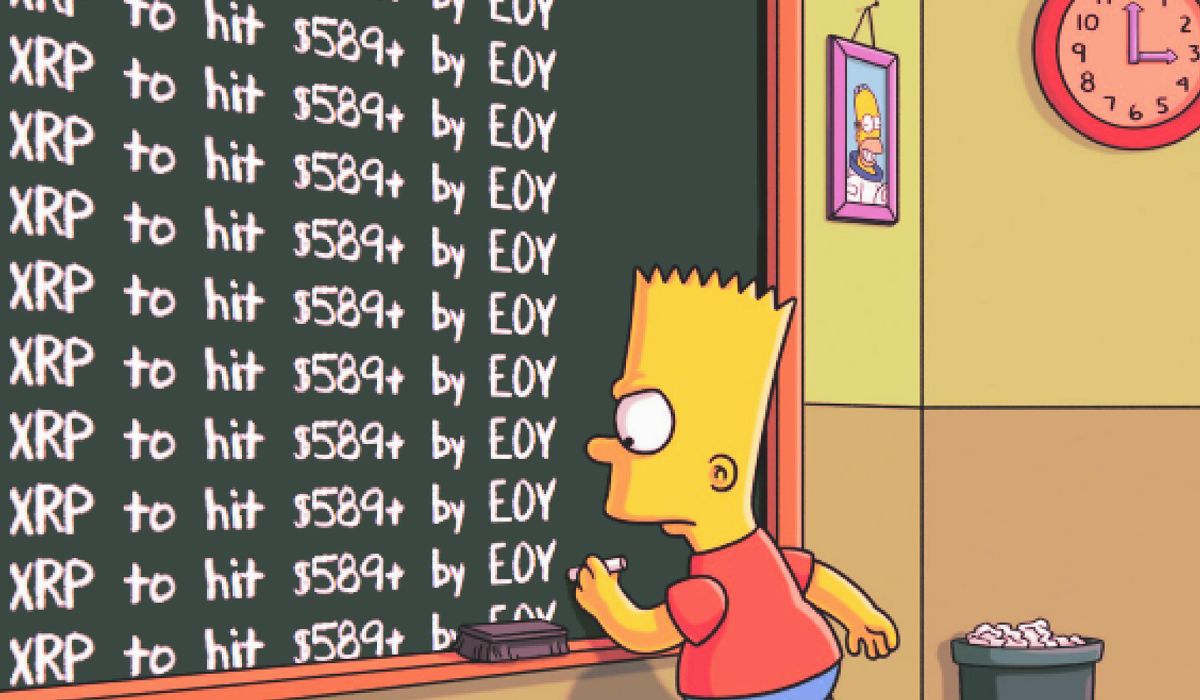
In the 2020 episode “Frinkcoin,” Bart Simpson writes on the classroom blackboard: “XRP to hit $589 USD by EOY.” At the time, this was a direct nod to the XRP community’s viral prediction that the coin would reach that price by the end of the year. While the joke was clearly exaggerated XRP only peaked around $3.84 in 2021 it perfectly captured the hype-driven optimism of early crypto investors. Fast-forward to 2025, XRP remains below $3, still facing regulatory battles, proving that even the smartest satire sometimes has a sting of truth.
2. Bart Becomes an NFT
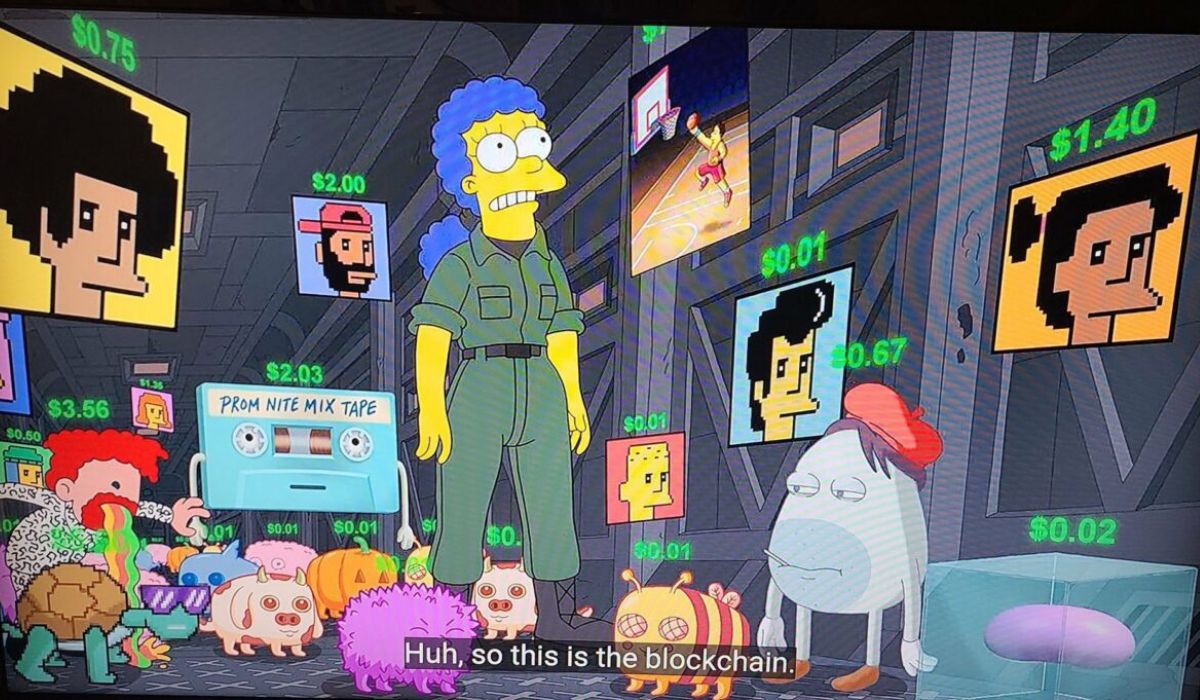
In 2023’s “Treehouse of Horror,” Bart finds himself trapped as an NFT in a digital art world. Marge dives into the blockchain to rescue him, navigating scenes filled with Beeple-style art and Bored Apes. This episode aired just after the real-world NFT market exploded to $41 billion in sales in 2021 before crashing in 2022. The writers managed to parody the highs and lows of the NFT craze, showing both the excitement of digital ownership and the chaos of speculation.
3. Bitcoin to Infinity
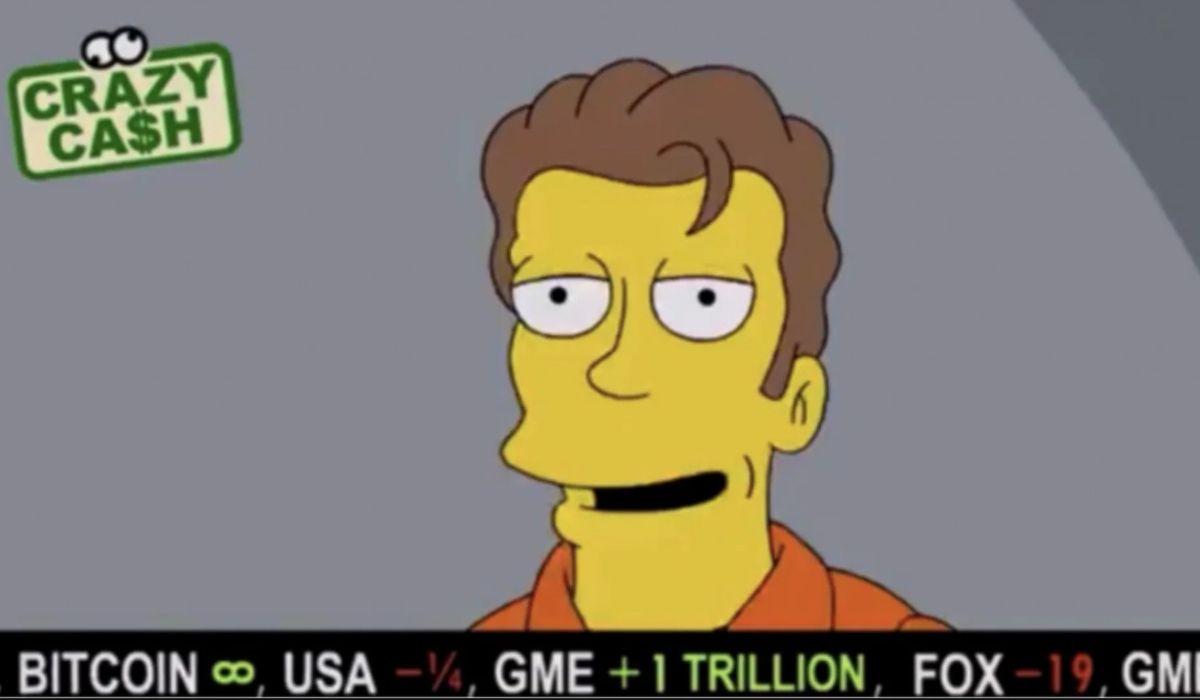
In the 2021 episode “Burger Kings,” a scene briefly flashes the Bitcoin symbol next to the infinity symbol (∞). To casual viewers, it might seem random, but to crypto enthusiasts, it symbolized the debate about Bitcoin’s limitless potential versus its volatility. During that period, Bitcoin had hit an all-time high of $69,000, and believers were calling it “digital gold.” The show cleverly mocked the narrative that Bitcoin’s price could rise forever a message that still resonates today as BTC oscillates between booms and corrections.
4. The “Frinkcoin” Lesson on Volatility
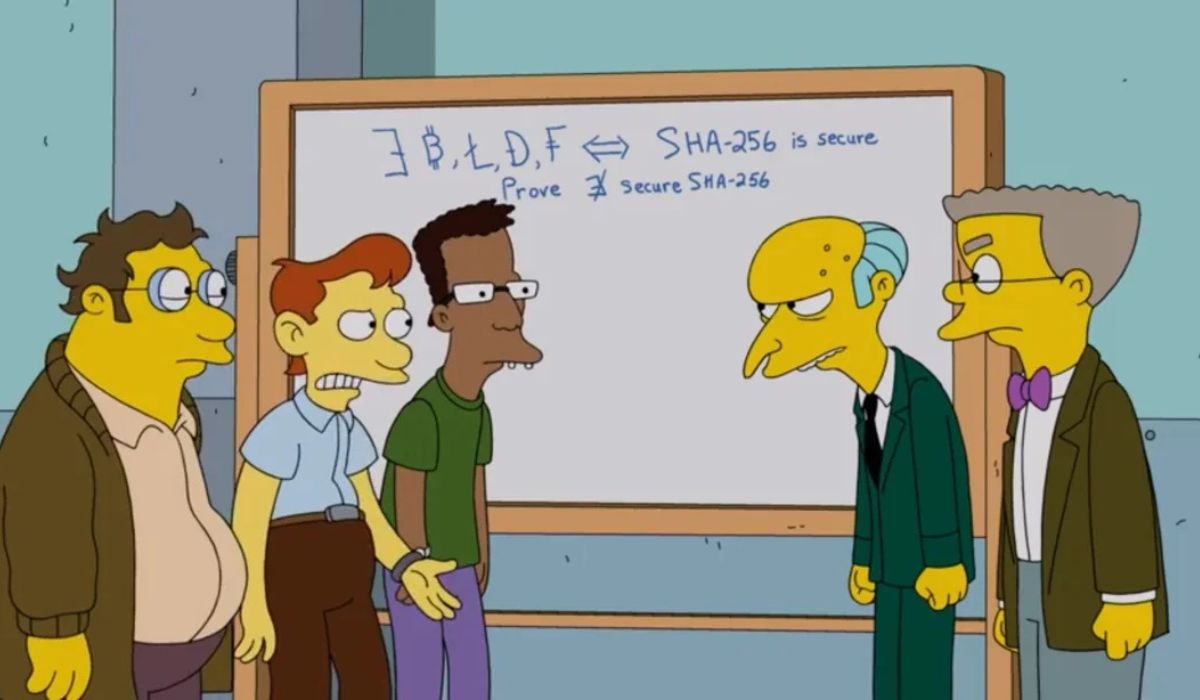
“Frinkcoin” also introduced a key character — Professor Frink — who created his own cryptocurrency. His attempt to explain digital assets included a memorable warning that crypto markets could swing like a slot machine. This parody was timely: 2020–2021 saw the birth of decentralized finance (DeFi), with total value locked (TVL) hitting over $100 billion before experiencing wild fluctuations. The show’s satire offered a surprising dose of education, reminding viewers that behind the hype, crypto remains unpredictable.
5. The 1997 “Crypto Barn” Foreshadowing
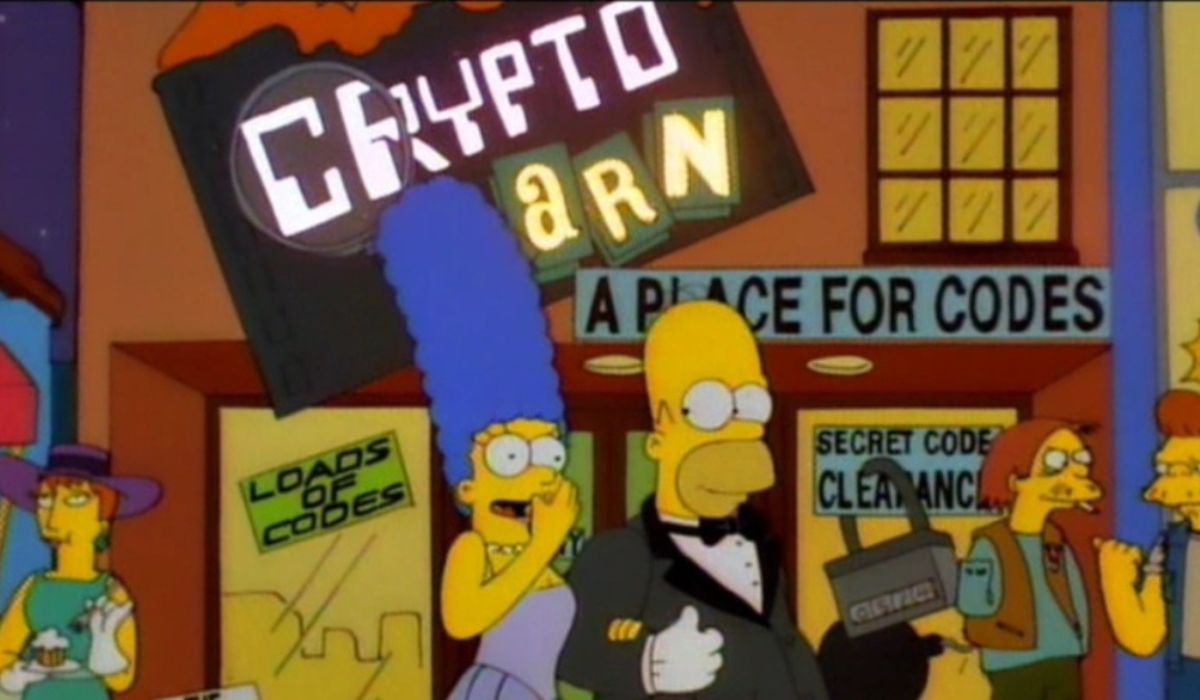
Perhaps the most fascinating “prediction” dates back to 1997, long before Bitcoin even existed. In one episode, a store called Crypto Barn appears, with a sign that reads, “A place for codes and passwords.” At the time, it was a throwaway joke about computer encryption, but in hindsight, it feels prophetic. More than a decade later, Bitcoin’s blockchain would make cryptography central to global finance. What was once a punchline about tech jargon now seems like a reference to the very foundation of digital currency.
How These Simpsons Predictions Reflect Reality
These coincidences show more than comedy brilliance they reflect society’s growing fascination with digital finance. The Simpsons has always been a cultural mirror, using humor to capture emerging ideas before they hit the mainstream. Its take on crypto works the same way: it simplifies complex technology through jokes and storytelling, making the topic accessible to millions. In many ways, the show’s references reveal how crypto moved from a fringe innovation to a household discussion. When Bart becomes an NFT or Bitcoin flashes on a fast-food sign, it’s a sign that blockchain has entered popular culture. These moments make crypto less intimidating and more relatable for everyday audiences, sparking curiosity without diving into technical jargon.
Of course, not everyone believes these are “predictions.” Skeptics argue that the writers are simply skilled observers of trends. They spot new technologies early and build stories around them, often exaggerating for laughs. But whether by coincidence or creativity, The Simpsons has shaped how people perceive innovation and crypto is no exception. As crypto continues to evolve, it’s easy to imagine more digital currency cameos in future episodes. Whether it’s Homer losing his seed phrase, Lisa explaining DeFi, or Mr. Burns mining Bitcoin in his basement, The Simpsons will likely keep blending comedy with commentary.
Ultimately, these “predictions” remind us that pop culture plays a powerful role in shaping awareness. What once sounded absurd digital money, NFTs, or smart contracts is now part of daily conversation. In that sense, The Simpsons didn’t just predict the future; it helped people laugh their way into understanding it.
Stay informed with daily updates from Blockchain Magazine on Google News. Click here to follow us and mark as favorite: [Blockchain Magazine on Google News].
Disclaimer: Any post shared by a third-party agency are sponsored and Blockchain Magazine has no views on any such posts. The views and opinions expressed in this post are those of the clients and do not necessarily reflect the official policy or position of Blockchain Magazine. The information provided in this post is for informational purposes only and should not be considered as financial, investment, or professional advice. Blockchain Magazine does not endorse or promote any specific products, services, or companies mentioned in this posts. Readers are encouraged to conduct their own research and consult with a qualified professional before making any financial decisions.